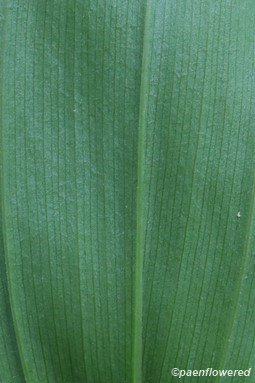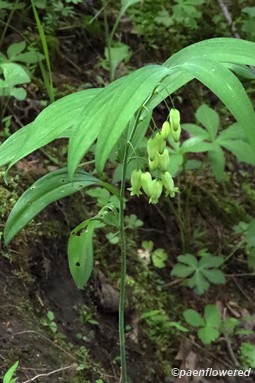Polygonatum biflorum
Polygonatum biflorum king Solomon's seal
King Solomon's seal is similar to the hairy Solomon's seal but is larger in length and flower size. The latin epithet 'biflorum' is given after the pairs of flowers that hang down from the leaf axils. The actual number of flowers per axil can vary from 2 to 10, with 2 being the most often encountered number. The leaves of this species are glabrous while the undersides of the leaves of hairy Solomon's seal are pubescent on the veins.
Habitat & Range
Common in dry to moist woods. Prefers shade to partial shade.
Present throughout the state.
Range: From Ontario south to Florida and west to Texas and Nebraska.
| EMP: | FACU |
|---|---|
| NCNE: | FACU |
Phenology
Flowers April to early June. Blooming period is 2-3 weeks.
Characteristics
Flowers hang from leaf axils in umbels containing 2 to 10 flowers; tubular, white to greenish-yellow with 6 green-spotted lobes at the tips
Leaves alternate, elliptical, entire; glabrous below; up to 6 inches long
Stem angular, curved at the top
Fruit blue-black berries; about ¼ inch across
Height 2 to 4 feet avg., 7 feet max
Plant Codes
S-rank: S5 (Secure)
G-rank: G5 (Secure)
Medicinal Qualities
Root of this plant contain a chemical called alantoin which can be used for external treatment of wounds and skin ulcers.
Ecology
Deers and rabbits graze on the leaves of this and other Solomon's seal species. Woodland birds eat the fruit and spread the seeds. The flowers attract hummingbirds, some butterflies and bees.





Comments
Have you spotted this plant in your area? We'd love to hear about your experience! Share your comments or questions about the plant below. Comments are moderated before posting.